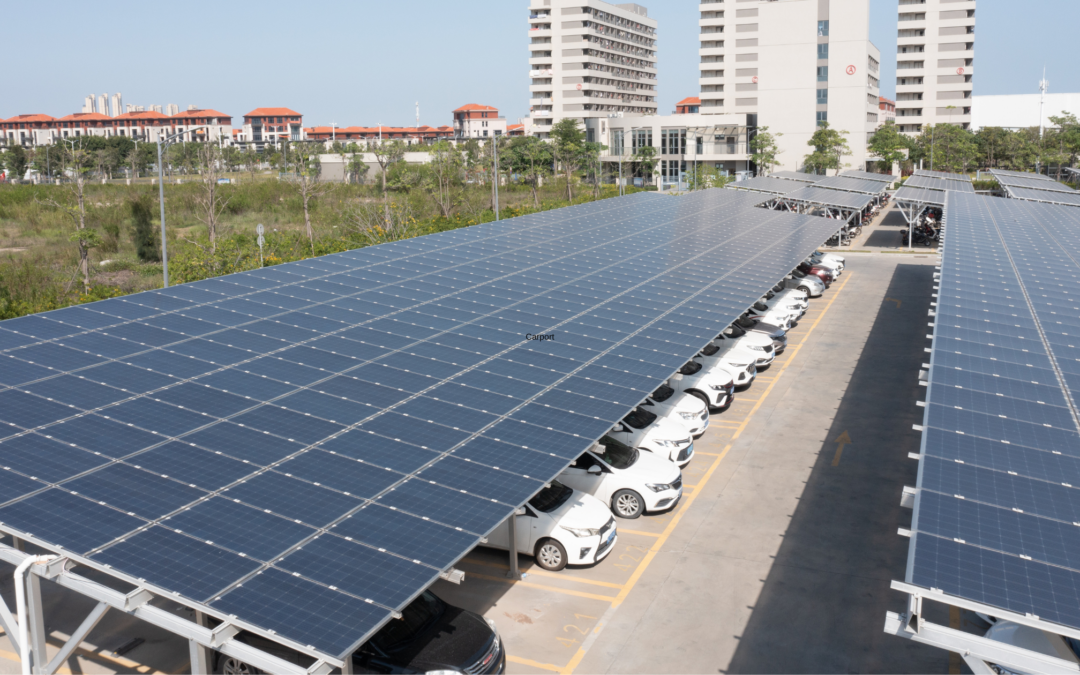
Hard Seltzers in The Beverage Industry
The global beverage industry has experienced a significant transformation in recent years due to the rapid rise of hard seltzers. These fizzy and often fruit-flavored drinks have not only attracted consumer interest but have also started to change the landscape of the alcoholic beverage market, particularly negatively impacting traditional beer and craft breweries.
Disruption in the Alcobev Landscape
Hard seltzers, typically containing around 4–5% alcohol by volume (ABV), have surged in popularity by aligning with contemporary consumer trends such as wellness, moderation, and convenience. The appeal lies in their low-calorie profiles, refreshing taste, and perceived “healthier” image compared to beer or spirits. According to NielsenIQ, the hard seltzer category has rapidly cannibalized share at bars and restaurants, with some establishments reporting 51% of buyers switched from beer and 40% swapped from cocktails.
This trend has put traditional beer makers, especially craft breweries, in a defensive position. Historically reliant on strong consumer loyalty and high-margin seasonal offerings, many breweries are now contending with flat or declining sales as drinkers shift to hard seltzers or other low-ABV options.
Impact on Beer Consumption
The beer industry, already facing headwinds due to evolving health consciousness and changing taste preferences, is now squeezed further. Craft beer, which once enjoyed near-cult status among urban millennials, is particularly vulnerable. The consumers who once sought hoppy IPAs or robust stouts are now looking for lighter, less calorific options that fit into active lifestyles.
This has resulted in several adverse effects for breweries:
- Reduced Volume and Revenue: Traditional beer sales have taken a hit in key demographics, particularly among younger consumers. Many breweries have seen their flagship products decline in relevance.
- Innovation Pressure: Breweries must reallocate resources to develop seltzer variants or other non-beer offerings. While some have succeeded, many struggle with brand dilution or operational inefficiencies.
- Retail Shelf Space: Hard seltzers are crowding out beers in both on- and off-premise retail. Once dominated by craft beer varieties, supermarkets give more real estate to seltzers from new entrants and legacy players like AB InBev or Molson Coors.
The Strategic Response and Its Limits
Some breweries have jumped on the seltzer bandwagon to counteract these losses, creating their lines of spiked sparkling water. However, these efforts often come with mixed results. Unlike beer, which benefits from centuries of brand heritage and craftsmanship, seltzers are typically judged by flavor, calorie count, and packaging. In contrast, new or tech-savvy entrants often have an edge.
The shift toward health-driven drinking doesn’t end with seltzers. Non-alcoholic beers, kombuchas, and ready-to-drink cocktails also carve out space, adding more pressure on traditional beer producers.
Hard seltzers are not just a fad; they represent a broader consumer evolution that values moderation, wellness, and portability. While this opens new opportunities for beverage companies, the impact on beer, especially craft breweries, is real and sustained. In the coming years, survival will depend on how nimbly breweries can diversify, reposition, or reinvent themselves in a market that no longer guarantees loyalty to the pint.
For food and beverage valuation services that truly take industry trends into consideration, Appraisal Economics is here to help!

The Big Beautiful Bill and Its Potential Impacts on Renewable Energy
The “One Big Beautiful Bill Act” (OBBBA), recently passed in the U.S. House of Representatives, has stirred significant concern across the renewable energy sector. While its name suggests optimism, climate and energy experts call it a direct threat to the clean energy transition, reversing years of federal progress on decarbonization, grid modernization, and domestic energy innovation.
Rather than advancing renewable energy, the OBBB essentially dismantles the federal tax credit structure that has fueled clean energy growth under the Inflation Reduction Act (IRA). It proposes the early repeal of several key credits, including:
- Sections 45Y and 48E, which offered performance-based and investment-based credits for clean electricity,
- Section 45X, a manufacturing credit designed to incentivize domestic production of solar panels, wind components, batteries, and inverters,
- Tax credits for residential clean energy, electric vehicles, energy storage, and efficient home improvements.
The bill sets a tight 60-day window after enactment for projects to “begin construction” to remain eligible. Additionally, from 2026 onward, any project with supply chain ties to “foreign entities of concern”—a designation targeting Chinese involvement—would be disqualified from credits altogether.
Economic and Market Implications
According to Energy Innovation’s analysis, the bill could slash clean electricity capacity additions by 72%, cutting annual deployment from roughly 100 GW to just 33 GW. This dramatic pullback would raise electricity costs, stifle domestic manufacturing, and significantly delay the country’s emissions reduction goals.
As the Center for American Progress highlighted, the rollback could also jeopardize more than 270,000 jobs created or supported by clean energy investments under the IRA, particularly in red and rural states that have attracted a surge of renewable manufacturing projects since 2022.
In Florida, for example, where utilities are working to expand solar and EV infrastructure, local experts warn that the bill will increase long-term costs for consumers, shrink investment, and deepen the state’s vulnerability to climate-related risks.
Industry and Expert Reactions
Clean energy advocates have described the legislation as a “clean energy nightmare scenario.” The Solar Energy Industries Association, American Clean Power Association, and National Association of Manufacturers have all opposed the bill, citing its economic and geopolitical consequences. The rollback of tax credits—especially for domestic manufacturing—could reduce U.S. competitiveness against China in clean energy supply chains, despite the bill’s intention to address those dependencies.
Moreover, experts stress that the bill doesn’t propose a serious alternative platform for a transition table, secure, or sustainable energy supply, creating uncertainty for developers, utilities, and investors alike.
Despite its populist branding, the One Big Beautiful Bill Act is not a pro-energy or pro-consumer policy. However, a sweeping reversal of clean energy incentives threatens to derail the country’s climate progress and undercut domestic economic gains. As it moves to the Senate, the future of U.S. renewable energy policy may hinge on whether legislators choose to preserve or dismantle the framework that’s driving the energy transition.
If you are looking for renewable energy valuation services that appropriately account for this turbulent environment, Appraisal Economics is here to help!

The Spike in Housing Development Near Malls
In recent years, one of the most surprising catalysts for housing development has come not from urban planners, developers, or local governments but from shopping malls. Many malls are no longer the epicenters of suburban retail culture they once were. As e-commerce and shifting consumer behavior have disrupted their commercial viability, storefronts have sat vacant. However, instead of slipping into obsolescence, malls are becoming key players in a new wave of mixed-use development, especially housing.
The Appeal of Mall-Centric Housing
A few key factors drive the shift toward residential development near or on mall properties. Malls are typically located in prime suburban areas with established infrastructure, including roads, public transit access, and proximity to schools and employment centers. This makes them highly attractive for developers looking to create dense, livable communities without starting from scratch.
Many mall properties, such as surface parking lots or vacant anchor stores, include large tracts of underutilized land ripe for redevelopment. By repurposing these spaces, developers can introduce residential units while maintaining or reimagining retail and commercial offerings, creating vibrant, self-contained neighborhoods.
Benefits for Communities and Developers
The integration of housing with retail offers various benefits. For developers, it provides a sustainable path forward for mall properties that are no longer profitable in their original form. It addresses the pressing need for more housing for municipalities, particularly in suburban areas where housing shortages are growing.
Residents, in turn, are rewarded with a lifestyle that prioritizes accessibility and walkability. Add them here: Imagine living steps away from grocery stores, restaurants, fitness centers, and entertainment venues, all without having to get behind the wheel. This model also promotes deeper community engagement by providing green spaces, co-working spaces, and places for the public to gather.
Challenges and Considerations
Despite the promise, transforming malls into mixed-use communities is challenging. Often, zoning changes are necessary, which can be met with resistance from area residents worried about greater density, increased traffic, or the loss of neighborhood character. Also, the success of these types of developments will depend on strategic design and a balanced tenant mix to ensure resident and commercial viability.
Financing can also be complex, particularly when retrofitting existing mall structures. Developers must navigate the intricacies of phasing construction, maintaining active retail operations during redevelopment, and aligning with long-term city planning goals.
A Glimpse into the Future
Cities like Atlanta, Toronto, and LA have seen successful examples of mall-to-residential conversions, and the trend shows no slowing. As urban centers expand outward and consumer habits evolve, the fusion of housing and retail in once-traditional shopping malls represents a forward-looking solution to some of the most pressing challenges in urban planning.
This movement reflects a broader rethinking of living, shopping, and interacting. Once a symbol of consumerism, the mall is being reimagined as a hub for community and connection, a powerful example of adaptive reuse that aligns with modern lifestyles and sustainability goals.
Appraisal Economics’ suite of real estate valuation services takes into consideration all of the complex nuances within the housing development landscape. Contact our team today!

Update on the State of Water Utilities
The U.S. water utility landscape 2024 was shaped by declining M&A activity, intensifying regulatory pressures, and shifting investment dynamics. As we enter 2025, utilities, investors, and public agencies must brace for continued disruption and renewed scrutiny.
M&A Activity: A Cautious Market
2024 marked the third consecutive year of decline in U.S. private water M&A activity. With just under 150,000 customer connections transferred, the market slowed to its lowest volume since 2018. This cooling is primarily attributed to high interest rates and increasingly complex regulatory hurdles.
Investor-owned utilities (IOUs) turned to small and tiny systems to avoid public and political pushback—nearly 80% of 2024 transactions involved systems serving fewer than 3,300 people. More significant transactions became riskier, with public opposition and litigation complicating approvals. For instance, high-profile resistance in Connecticut led to extended delays and negative headlines for major players.
Still, while volume dipped, strategic interest in wastewater systems remained strong. In Q4 2024, wastewater assets accounted for half of all M&A deals, an all-time high by quarterly share. This signals a growing recognition of long-term value in decentralized and aging wastewater infrastructure.
Regulatory Pressures: PFAS and Public Accountability
The regulatory climate in 2024 was dominated by the EPA’s finalization of its national drinking water standards for PFAS or “forever chemicals” linked to severe health conditions. The new rule sets legally enforceable limits on six PFAS compounds, with compliance deadlines beginning in 2027.
Water utilities, particularly smaller systems, are grappling with the financial implications. Testing, treatment installation, and long-term monitoring will require significant capital investment. Some systems may need to consolidate or seek acquisition to meet regulatory demands, presenting both a challenge and an opportunity for consolidation.
In parallel, consumer advocacy has gained ground. Public distrust fueled by ongoing lead pipe replacement issues and high-profile contamination cases has amplified calls for transparency and stricter utility oversight. Regulatory bodies respond with increased inspections, reporting mandates, and stringent enforcement.
What to Expect in 2025
Looking ahead, the water utility M&A market is expected to remain muted. Elevated interest rates and regulatory fatigue will continue suppressing the appetite for large transactions. That said, niche opportunities in underserved areas and wastewater infrastructure may still attract targeted investment.
Utilities are also bracing for the financial weight of PFAS compliance. Many will reassess their asset portfolios, operating models, and partnership strategies to stay afloat. States may step in with additional funding support, but federal dollars, mainly through the Bipartisan Infrastructure Law, will remain a critical lifeline.
From an appraisal perspective, we anticipate significant variability in utility valuations in 2025. Regulatory compliance costs, rate-setting challenges, and operational risk profiles will be key valuation drivers, particularly for systems facing PFAS-related upgrades.
The U.S. water utility sector is navigating a period of recalibration. While headwinds persist, strategic buyers and well-prepared operators will find value, especially where regulatory pressure aligns with infrastructure needs. At Appraisal Economics, our appraisal services help clients quantify risk, measure opportunity, and make sound decisions in a rapidly changing environment.

Negative expected impacts to US economy from a trade war with Canada
Trade between the United States and Canada is profoundly significant because both countries trade with each other the most. Any form of trade conflict would be equally damaging to both countries. A trade dispute in the form of a trade war between these two nations would lead to devastating economic consequences for the United States and ruin some other critical sectors, leading to severe unemployment and distressed economic growth.
When it comes to Canada, the United States will economically endure a decline if a trade war develops, particularly concerning production, energy, and agriculture. A substantial amount of agricultural products, such as grains, meat, and dairy, are imported by Canada from the US. If they choose to fight back, it will be less favorable for American farmers due to less favorable American imports. Similarly, the automobile and steel industries, which rely heavily on exports from the neighboring states, will experience shipping delays, increased production prices, and a loss of global market competitiveness.
Added trade restrictions and rising tariffs difficulty would put considerable economic pressure on businesses that depend on exports from Canada. There may be increased unemployment as companies will need staff layoffs. These small businesses would especially suffer as the economy dollars spent by Canadian consumers and vendors. An unfavorable change in economic conditions may lessen the consumer’s confidence, resulting in decreased expenditures and investments in the nation.
Wars fought by countries over trade result in inflation, making goods and services more expensive. If Canada tariffs on American products, US businesses stubbornly try to reclaim the losses by charging American consumers. Not only goods but also the materials needed to manufacture them will become costlier. The economy will undoubtedly face fueling inflation. Industries heavily affected would include the agriculture, automobile, and homeware sectors, worsening citizens’ financial situation.
This economic conflict is bound to tarnish America’s reputation as a go-to trade partner. Canada trades extensively with several countries, and it is logical to assume they will look for other agile, flexible partners. Economically, they’ll be able to strengthen ties with the European Union and China, not to mention Canada itself. As a result, American clout and trade will decline in North America. This ultimately can result in a diminished US export market for longer.
Although fighting trade disputes can sometimes be necessary to protect national interests, a prolonged trade war with Canada would be economically costly for the United States. The negative consequences could well outnumber potential benefits, from job losses and rising consumer costs to weakened trade relationships. While economic integration is the foundation of prosperity and stability in North America, maintaining strong trade relations with Canada is equally paramount to long-term partnership.
As the global economy navigates these potential challenges in the coming months, accurately capturing valuation changes as companies increase prices and reduce headcount will be of paramount importance. Learn more about how Appraisal Economics can help!

Review Of M&A Activity For Nonprofits In 2024
Nonprofit mergers in 2024 reflected an industry recalibrating in response to economic pressures, funding constraints, and shifting donor expectations. Organizations once hesitant to consolidate now view mergers and acquisitions (M&A) as a proactive strategy rather than a last resort. Last year underscored a growing emphasis on mission alignment over mere financial survival, with leadership teams prioritizing strategic combinations that amplify impact rather than simply preserve operations.
The most successful mergers have integrated complementary programs, reducing redundancies while enhancing service delivery. Unlike previous years, where financial distress often dictated consolidation, today’s nonprofits are approaching M&A to optimize efficiency and achieve broader systemic influence.
Financial Pressures and Regulatory Shifts
Economic headwinds have significantly shaped nonprofit M&A activity this year. Inflationary pressures and fluctuating donor contributions have pushed organizations to consider partnerships that stabilize revenue streams and expand donor networks. Grant-making entities and major philanthropic institutions have signaled a preference for supporting fewer, stronger organizations rather than dispersing funds across an increasingly fragmented sector. As a result, nonprofits looking to secure long-term funding have leaned into M&A as a strategy to present a more compelling, scalable model to institutional funders.
Regulatory changes have also influenced deal structures. Increased scrutiny of governance frameworks and financial transparency has required organizations to approach consolidation with greater diligence. Boards conducting due diligence are now prioritizing not only financial compatibility but also governance cohesion, ensuring that merged entities meet heightened compliance standards while maintaining their public trust. Transactions in 2024 have widely centered on streamlined governance structures that facilitate efficient decision-making without diluting mission integrity.
The Role of Technology in M&A Execution
Digital transformation has reshaped how nonprofits navigate mergers, from initial due diligence to post-merger integration. Organizations with sophisticated data management systems have experienced smoother transitions, leveraging analytics to assess program impact, financial health, and operational efficiency before finalizing agreements. Cloud-based collaboration platforms and AI-driven financial modeling tools have reduced integration timelines, allowing leadership teams to make data-driven decisions faster and more accurately.
Beyond logistics, technology has also influenced how nonprofits communicate mergers to stakeholders. In an era where transparency and engagement drive donor confidence, organizations have embraced digital storytelling to convey consolidation’s rationale and anticipated impact. Social media campaigns, donor webinars, and interactive reports have become essential in shaping the public narrative around mergers, ensuring that key stakeholders view them as strategic enhancements rather than distress signals.
Looking to the Future
The trajectory of nonprofit M&A suggests that consolidation will remain a dominant strategy for organizations seeking long-term resilience. While financial stability continues to be a driving force, the sector’s shift toward intentional, impact-driven mergers signals a more strategic approach to organizational growth. Nonprofits that recognize M&A as a tool for amplifying influence rather than a reaction to adversity will set a precedent for sustainable collaboration. As economic pressures persist and regulatory expectations evolve, leadership teams that approach consolidation with foresight, agility, and a commitment to mission integrity will emerge stronger and better positioned to navigate the sector’s complexities.
Within this process, M&A-related valuations can be crucial in aligning critical insight and transactional stability. Appraisal Economics brings over 30 years of experience in such services, making us a premier option for those pursuing a merger or acquisition.

How Might The Trump Administration Impact Renewable Energy?
Over the last 10 years, wind, solar, and other clean energy technologies have reached a point where renewable energy is an essential part of the efforts to fight climate change. However, government policies underlie the path and growth of this sector, and the Trump Administration is perhaps the most profound embodiment of this fact. Moving forward, this often unpredictable and dynamic administration will play a crucial role in renewable energy’s immediate future.
A point of consideration in renewable energy is the various effects due to the administration of former President Donald Trump. The administration rolled back or weakened many policies aimed at limiting carbon emissions and encouraging clean energy. One of the most affirmative aspects of abandoning the Clean Power Plan was the loss of massive government incentives for states to convert to renewable energy. This policy move, which cut federal funding, has left investors and entrepreneurs in renewable energy facing unfamiliar uncertainty.
As president, Trump’s federal government has offered several proposed budget cuts to agencies and programs that provide federal support for renewable energy, including the Department of Energy’s Office of Energy Efficiency and Renewable Energy (EERE). Though Congress mostly voted down these cuts, the administration’s position communicated a deprioritization of clean energy research and innovation on the federal level. This negligence of developing renewables may have hampered the progress of clean energy.
The Trump Administration’s trade policies also affected the renewable energy sector. Before the levies, solar panels imported under a new scheme faced $49 billion in extra tariffs, which could have raised developers’ costs and potentially slowed projects. While designed to boost domestic production, the tariffs also raised costs for companies that rely on manufactured solar parts overseas, exacerbating the sector’s growth challenges.
Investments in renewable energy at the state and private sector levels were rising despite federal headwinds. Many states – notably, California, New York, and Texas – have set bold renewable energy goals and instituted supporting policies. Corporations also gradually started making sustainability a key focus, pledging to use renewable energy. These efforts helped counteract federal policy shifts and maintained momentum in the industry.
Even though federal policies played a role in developing the renewable energy sector, there was still progress on this front thanks to the effects of market forces complemented by technological advances. Those declining costs made wind and solar power increasingly competitive with fossil fuels, spurring investment and development despite strong federal incentives. If nothing else, the economic underpinnings of the energy transition towards renewables were so strong that turning it back would be a considerable challenge, even if the policies changed.
The Trump Administration did create hurdles for the growth of renewable energy. Still, the industry powered through them—policies at the state level, corporate sustainability commitments, and falling prices made for ongoing expansion. Long-term trends in renewable energy in the U.S. should remain positive, but federal policy will always play an essential role in setting the pace and scale of that growth. Future administrations will have chances to re-establish and expand federal assistance for renewables, fortifying the country’s transfer to cleaner power.
Simply put, despite the roadblocks presented by the Trump administration, the momentum for renewable energy in market economics and advocacy was impossible to stop. The future for renewables will center on consistent support for policy, technological innovation, and continued investment in clean energy.
Renewable energy valuation remains a noteworthy facet in this broad equation – and Appraisal Economics is the perfect partner with decades of experience appraising renewable energy projects throughout the United States and abroad.

What Is An “Up-C” Structure, And What Are The Benefits?
An Up-C structure is an efficient vehicle for operating partnerships seeking to access public capital markets while preserving favorable tax treatment for original owners. Unlike a traditional C corporation IPO, this structure allows pre-IPO investors—typically private equity or venture capital firms—to maintain their economic interests in a pass-through entity, shielding them from the double taxation inherent in a corporate framework.
Structuring an Up-C IPO
Fundamentally, structuring an UP-C IPO involves forming a public C corporation (PubCo) that serves as the parent holding entity – while the original operating business remains structured as a partnership or limited liability company (Flow-through Entity). Pre-IPO owners exchange their partnership units for a new class of exchangeable interests, which retain direct ownership in the Flow-through Entity but allow for conversion into PubCo shares over time. This arrangement enables the Flow-through Entity to conduct an IPO while maintaining its tax-efficient status.
PubCo holds only a controlling interest in the Flow-through Entity, with public shareholders owning Class A common stock and original partners retaining Class B shares that confer voting rights but no economic benefits. These Class B shares align voting power with economic interest as ownership shifts over time. PubCo typically uses IPO proceeds to acquire Flow-through Entity units from original owners, effectively monetizing their stakes while preserving tax treatment and governance flexibility.
Tax and Economic Advantages
A central benefit of this structure lies in its tax efficiency. The Flow-through Entity remains a pass-through for tax purposes, ensuring that original owners continue to avoid entity-level taxation. As original partners exchange their Flow-through Entity units for PubCo shares, the corporation benefits from a step-up in tax basis, reducing future tax obligations on appreciated assets. This basis step-up, frequently monetized through a tax receivable agreement (TRA), allows the original partners to capture a negotiated portion of PubCo’s tax savings, often set at 85 percent.
TRA provisions enhance the appeal of the Up-C structure by ensuring that economic value derived from these tax attributes does not accrue solely to new public investors. PubCo benefits from amortizing goodwill and other intangibles over a 15-year period, further improving its post-IPO cash flow. Additional basis step-ups occur with each subsequent exchange of Flow-through Entity units, increasing the long-term benefits of the TRA arrangement. In certain liquidity events, such as mergers or buyouts, TRAs may include lump sum payout provisions, accelerating the realization of tax benefits for original investors.
Structural Considerations and Market Implications
Maintaining an Up-C framework post-IPO requires executing several key agreements, including an exchange agreement governing liquidity events for original owners and a registration rights agreement facilitating the resale of converted shares. Since public shareholders hold economic interest solely in PubCo, the structure enhances transparency while ensuring that governance remains aligned with the long-term interests of founding investors.
Market dynamics are crucial in determining whether an Up-C approach remains advantageous over time. While it offers substantial tax benefits and liquidity flexibility, ongoing compliance with TRA payments and regulatory filings adds administrative complexity. Investors evaluating an Up-C transaction must weigh the incremental costs against the structure’s tax efficiencies and strategic control advantages.
Long-Term Strategic Implications
The Up-C structure provides a sophisticated pathway for private equity and venture-backed entities to transition into public markets without relinquishing key economic and tax advantages. This approach offers a compelling blend of liquidity and operational continuity by preserving a partnership’s flow-through status while securing access to capital. Its success hinges on careful structuring, alignment of incentives, and ongoing management of tax and regulatory considerations, making it an essential tool for firms balancing IPO aspirations with long-term financial optimization.
Appraisal Economics provides valuations for Up-C entities for a variety of purposes, accurately capturing the nuances of the unique ownership structure.

Intellectual Property as Loan Collateral: Is it Becoming More Popular?
Intellectual property (IP) is increasingly carving its niche as a valuable form of collateral in loan agreements, reshaping the landscape of secure debt financing. As businesses prioritize innovation, their intangible assets – patents, trademarks, copyrights, and trade secrets – carry significant financial weight. This shift reflects a broader acknowledgment of IP’s role in driving enterprise value, particularly in industries centered on technology, pharmaceuticals, and entertainment. The trend signals a growing sophistication in how lenders assess and monetize collateral, aligning with the evolving needs of borrowers seeking to unlock the economic potential of their intangible assets.
Leveraging IP for loans is not merely a financial transaction — but a deeper recalibration of risk and reward. Lenders assess IP for its enforceability, market relevance, and potential for generating revenue streams, such as licensing agreements or royalties. This due diligence goes beyond surface-level valuation, requiring a nuanced understanding of how IP interacts with broader market forces. For borrowers, the ability to secure loans without relying on traditional physical assets offers critical flexibility, particularly for startups and mid-sized enterprises that often lack substantial tangible collateral. The approach enables these companies to access capital while preserving equity and focusing on growth-oriented strategies.
Notably, industries with high concentrations of innovation are driving this momentum. The tech sector, with its robust portfolios of patents and proprietary software, exemplifies the growing appetite for IP-backed financing. Pharmaceutical companies leverage their patents to secure funding for drug development, while media and entertainment businesses capitalize on their copyrights and trademarks. These examples illustrate how IP serves not only as a financial instrument but also as a reflection of the company’s competitive edge. This strategic alignment between intellectual property and loan structures fosters a more dynamic relationship between innovation and financial growth.
Specialized lenders and investors are responding to this trend with tailored financial products. Organizations like US Capital Global have developed frameworks that enable businesses to secure loans through IP-backed structures, bridging the gap between asset valuation and capital access. Their approach highlights the importance of pairing financial expertise with an understanding of IP’s unique attributes, as outlined in a recent feature by US Capital Global. Lenders adopting this model not only assess the intrinsic value of IP but also consider its ability to generate long-term, predictable cash flows, ensuring both borrower and lender benefit from the arrangement.
As IP-backed financing gains traction, its adoption underscores a broader shift in how businesses conceptualize and leverage their assets. This strategy offers a pathway to liquidity for companies that might otherwise face funding roadblocks, empowering them to scale operations, innovate, and compete effectively in global markets. However, successful implementation requires meticulous planning, legal precision, and strategic foresight to protect both the integrity of the IP and the financial security of the loan.
The rising prominence of IP as collateral signals more than a financial innovation; it reflects a fundamental rethinking of how businesses and financial institutions collaborate to drive value creation. This model provides a compelling blueprint for the future of secured lending, and its growing adoption is a testament to IP’s enduring power in today’s economy.
Appraisal Economics offers sophisticated IP valuation services, bringing years of experience in IP valuation and general bank financing appraisals.

US Solar Carport Market – Key Drivers For Growth
Solar carports in the United States have emerged as a critical segment of the renewable energy market, leveraging the convergence of sustainability goals and advancements in photovoltaic technology. Unlike traditional ground-mounted solar arrays, carports integrate seamlessly into urban and suburban environments, offering dual-purpose functionality by combining renewable energy generation with practical shelter for vehicles. This dual utility has positioned them as an attractive solution for municipalities, corporations, and institutions seeking to maximize underutilized space while meeting ambitious sustainability targets.
The financial case for solar carports continues to gain momentum due to a combination of federal tax credits, state-level renewable energy mandates, and localized incentives. Entities like the Federal Investment Tax Credit (ITC) and initiatives under the Inflation Reduction Act have made these projects more accessible by reducing upfront costs and bolstering long-term returns. Beyond financial appeal, corporate entities increasingly regard solar carports as an opportunity to strengthen their environmental, social, and governance (ESG) profiles while achieving energy cost reductions. This blend of economic and strategic benefits has created fertile ground for public and private sector investments alike.
Advancements in technology have further solidified the role of solar carports within modern energy strategies. Enhanced panel efficiency and the integration of cutting-edge energy storage systems have amplified their utility, particularly in space-constrained urban environments. High-efficiency panels maximize energy production in limited areas, while battery systems enable facilities to optimize energy usage, enhance grid resilience, and mitigate peak demand costs. These technological improvements transform solar carports into a linchpin of comprehensive energy management systems rather than standalone installations.
As urban centers expand, the need for innovative solutions to optimize land use has intensified. Solar carports address this challenge by converting existing parking lots into renewable energy hubs. These installations negate the need for additional land acquisition, a key consideration for municipalities and schools operating under spatial and financial constraints. By repurposing familiar infrastructure, these entities can seamlessly integrate renewable energy projects into their operations, reducing costs and environmental impact.
Evolving consumer demands and shifts in policy frameworks further propel the solar carport market forward. The rising popularity of electric vehicles (EVs) has positioned solar carports as an ideal platform for integrating EV charging stations powered by renewable energy. This convergence of clean energy and sustainable transportation appeals to consumers and aligns with state initiatives encouraging the expansion of EV infrastructure. The resulting synergy highlights solar carports’ role in addressing intertwined energy and mobility transformation goals.
Moving forward, solar carports stand as a vital component of the United States’ renewable energy landscape; their ability to deliver significant environmental and economic advantages ensures continued relevance in the nation’s transition to a sustainable energy economy. As technology evolves and policy support remains robust, solar carports will increasingly serve as a scalable and adaptable solution, meeting the complex demands of a rapidly changing energy sector.
Appraisal Economics offers valuation services for those gauging the ever-changing value of solar carports.
